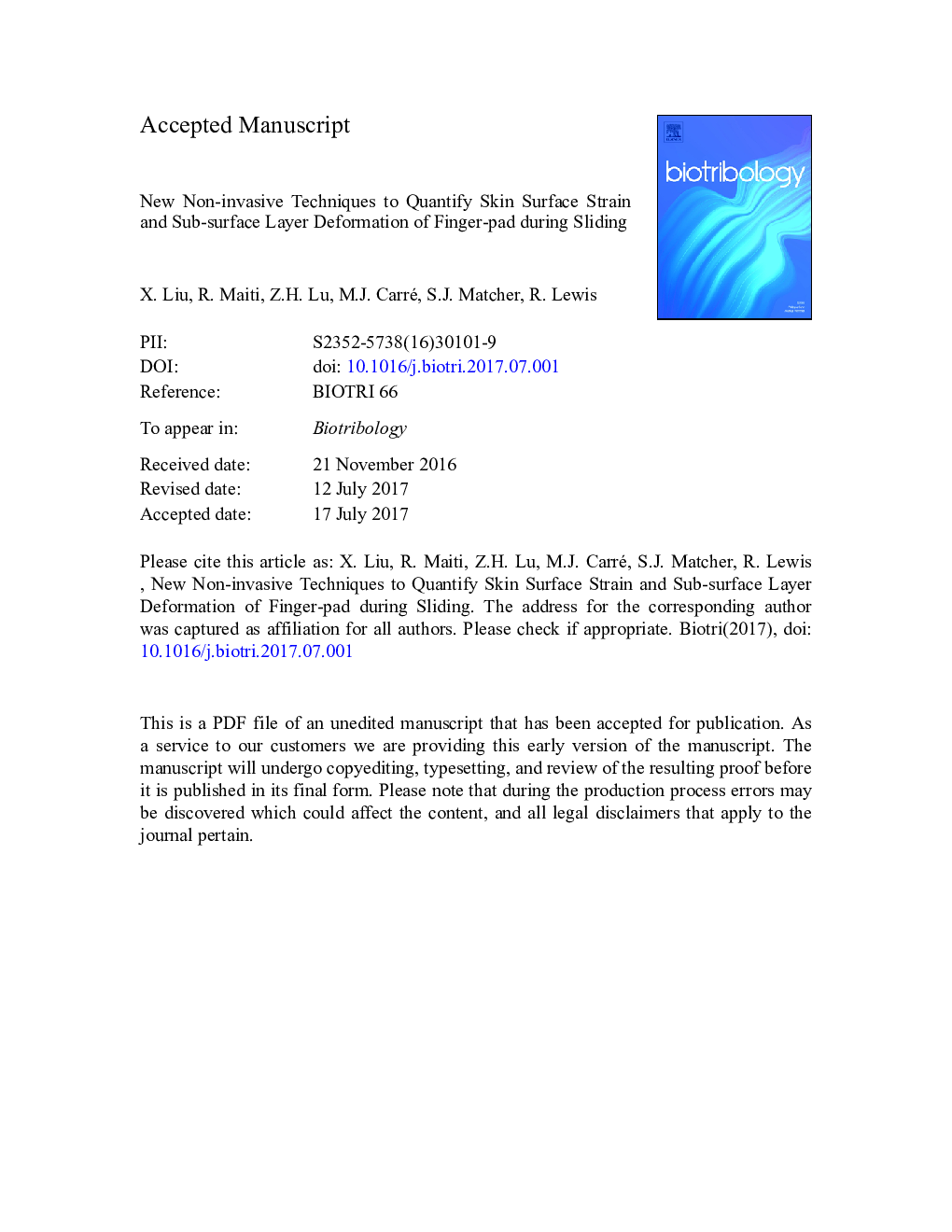| Article ID | Journal | Published Year | Pages | File Type |
|---|---|---|---|---|
| 7153137 | Biotribology | 2017 | 20 Pages |
Abstract
It was observed that the number of ridges in contact with a Quartz glass surface, observed under OCT, reduced when the finger started sliding. The sliding also resulted in deformation at the stratum corneum junction. The surface strain, analysed using DIC was higher nearer to the distal interphalangeal joint compared to the fingertip. This newly developed approach provides a powerful and non-invasive method to study the structural changes of finger-pad skin during loading and sliding. This approach can now be repeated at different anatomical locations for medical, bioengineering and consumer applications.
Related Topics
Physical Sciences and Engineering
Engineering
Biomedical Engineering
Authors
X. Liu, R. Maiti, Z.H. Lu, M.J. Carré, S.J. Matcher, R. Lewis,
